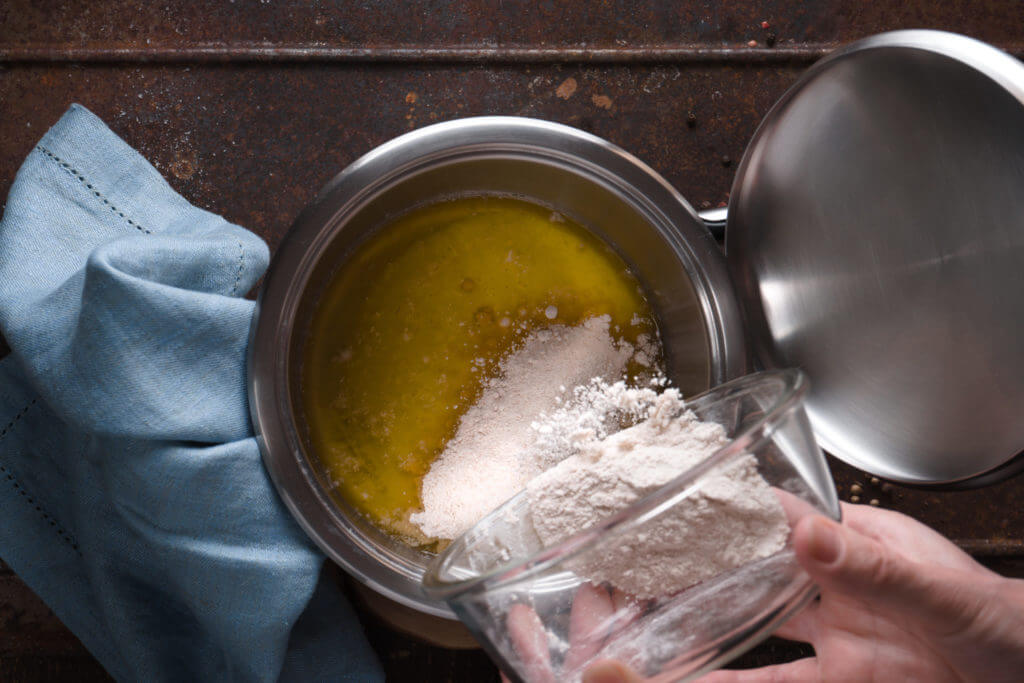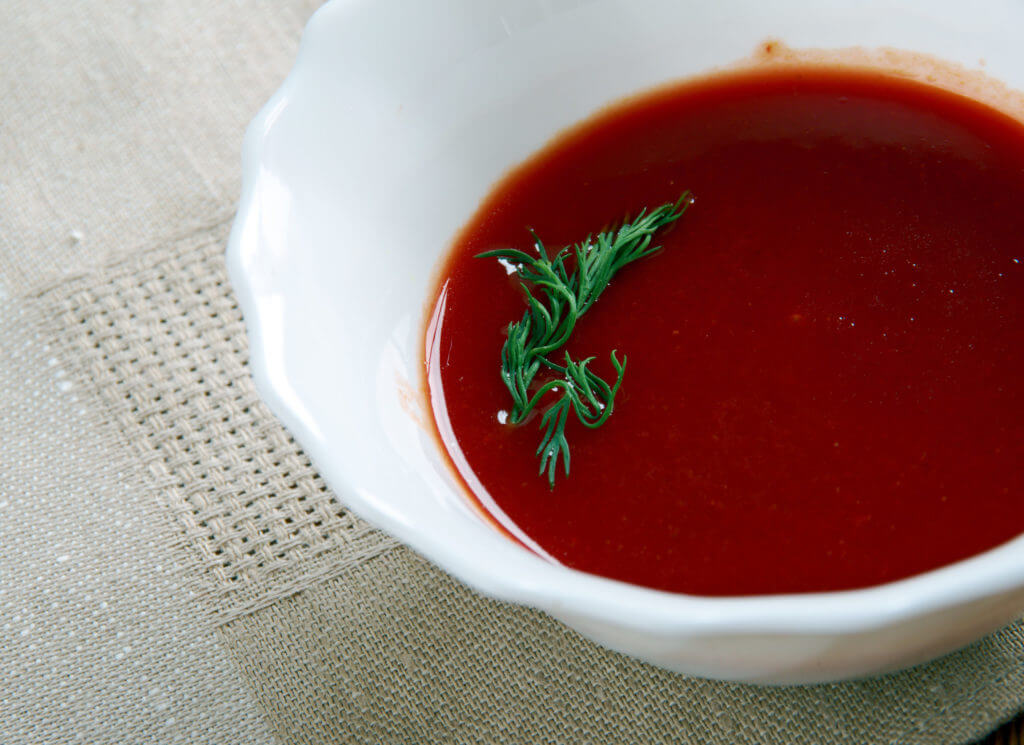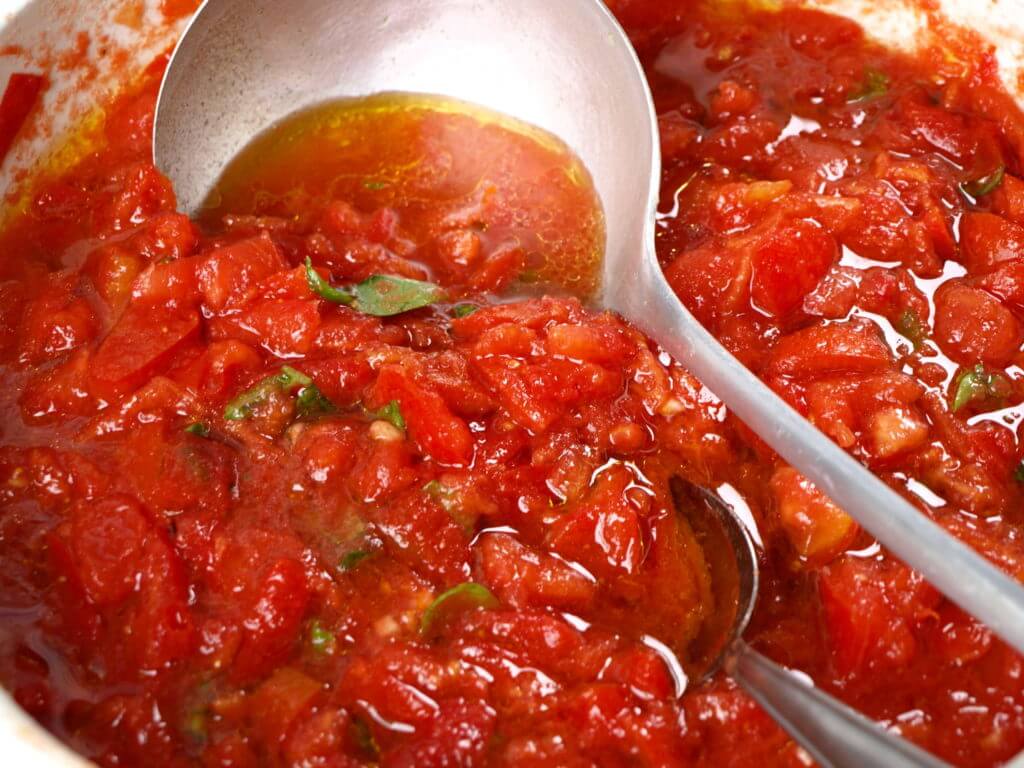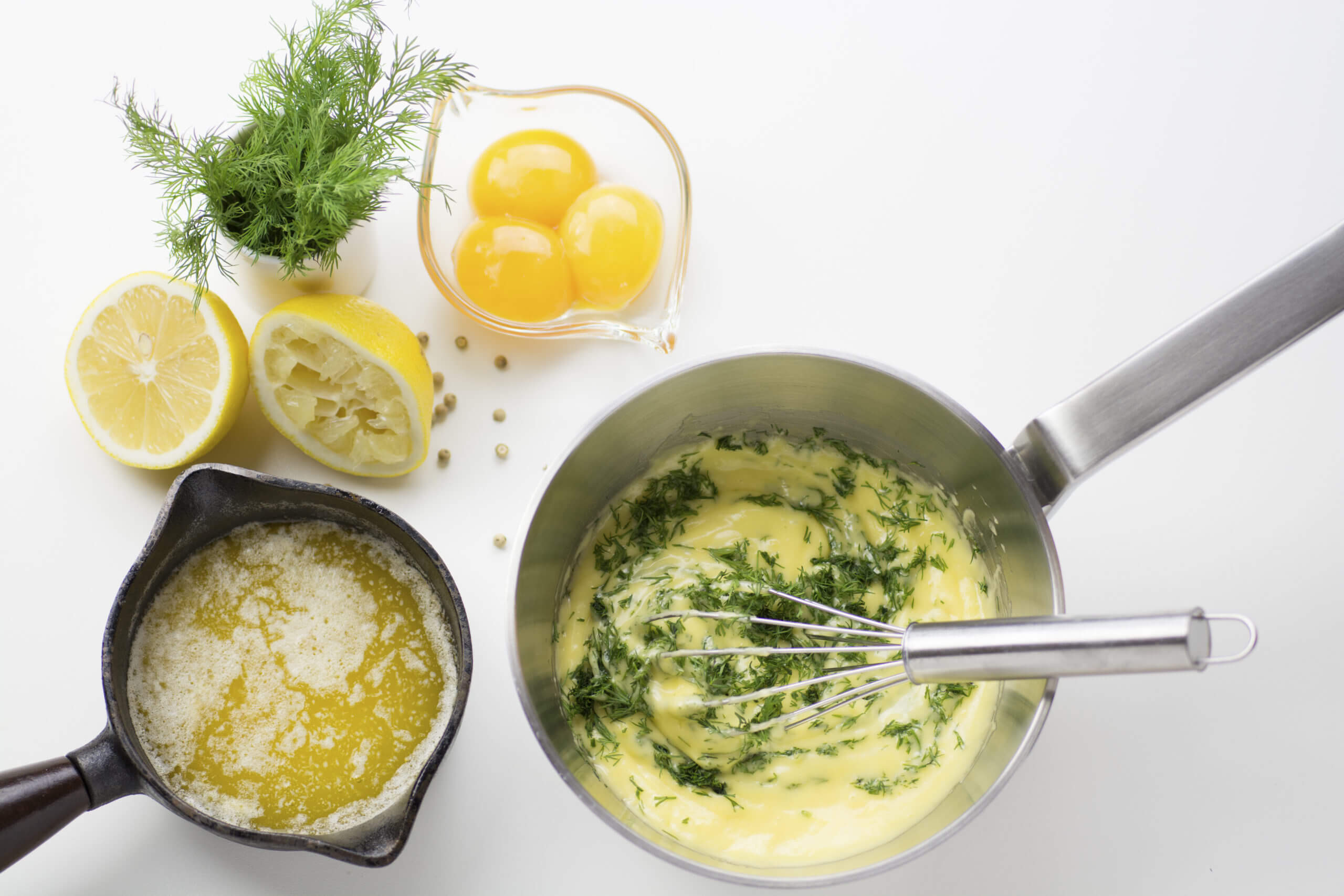An Introduction to the 5 French Mother Sauces
Classic French culinary techniques shouldn’t intimidate the everyday cook. In fact, mastering a few of these basic skills can make home cooking significantly easier!
This is especially true with the five classic “mother sauces.” These basic sauces can be enjoyed as is, or used as a base for dozens — or even hundreds — of other sauces. The family tree of French sauces has many branches!
Famous chef Marie-Antoine Carême codified the four original Mother Sauces in the early 1800s. His recipes for Velouté, Béchamel, Allemande, and Espagnole were vital to every French chef.
About 100 years later, chef Auguste Escoffier reclassified Allemande as a “daughter sauce,” or variation, of velouté. He also added Sauce Tomat and Hollandaise to the mix, leaving us with the five mother sauces we still learn today.
Read on to learn the basics of each mother sauce and some common uses for these important foundations of French cuisine!
What is a Sauce?
First thing’s first: what exactly do we mean by “sauce”?
A sauce is a liquid with the addition of a thickening agent and other flavors, such as herbs and spices. So a gravy is a sauce, but a vinaigrette is not.
Making a great sauce depends on developing a strong flavor profile and achieving the correct consistency, which means using the right thickening agent. This could be flour, eggs, cornstarch, or a roux.

What is a Roux?
Three of the five mother sauces start with a roux as the base. A roux is made from equal parts fat and flour. The fat — usually clarified butter in French cuisine — is heated until it’s frothy. Then, flour is stirred in slowly to create a thick paste.
As the roux cooks, it will darken in color. Some sauces call for a very light roux, while others require a golden or even brown roux. Always watch it closely to prevent burning! There’s no saving a burnt roux, and you’ll have to start over.
Culinary & Pastry Career Survey
Culinary & Pastry Career Survey
What's your ideal culinary career? Answer 20 simple questions and see if your dream career gets revealed to you.

We’ve compiled of all of the essential questions into one handy guide: Career options, description of skill requirements, and more!


Meet the Mother Sauces
The five mother sauces are quite varied in their flavor profiles and complexity. But they’re all versatile, easily tweaked into dozens of delicious recipes.
Béchamel
Pronounced “beh(y)-shah-mehl,” this simple recipe starts with a very light roux. Add milk to the roux slowly, whisking to prevent lumps. Then season with salt and pepper, and that’s it! Some recipes also call for a small sprinkling of nutmeg for added flavor.
This basic white sauce is thick and clingy. It’s used in dishes from gratin to Croque Monsieur to a rich mac and cheese!
We can also turn it into a soubise with the addition of onion puree, which is delicious on roasted pork or chicken.
Velouté
Velouté is similar to a béchamel, with a few key differences. First, the roux cooks longer, turning a pale gold. Then instead of milk, you’ll stir in a bone stock. This is traditionally a veal stock, but it could be substituted with lamb or chicken.
Adding stock instead of milk makes velouté a thinner sauce than béchamel. It should be very smooth — after all, velouté is French for velvety.
Velouté’s daughter sauces include Sauce Allemande, which adds lemon, egg, yolk, and cream. Sauce Normandy is another daughter, which includes egg, butter, and cream for richness. A basic white wine sauce is also derived from velouté. This is one of the most versatile of the 5 mother sauces, and shouldn’t be overlooked by the home chef!
Espagnole
Sauce Espagnole is a bit more complicated than most of the other mother sauces. This is the final mother sauce that starts with a roux.
But since this is a darker sauce, the roux is allowed to brown much more. Make sure to keep a close eye on that roux — there is a fine line between brown and burnt!

Brown stock, tomato puree, and flavorful herbs bring more flavor and depth to Espagnole. The resulting sauce has a very strong flavor, so it isn’t used in its “mother” form as often as others.
It’s more common to use one of Espagnole’s daughter sauces. Madeira, for example, adds Madeira wine and is delicious on roast chicken or beef. Mushroom sauce is another daughter, as well as demi glace, which includes additional stock and sherry. Demi glace is often added to soups or poured over veal or steak.
Sauce Tomat
Often simply called “red sauce” today, sauce tomat is the precursor to our modern pasta sauces.
Auguste Escoffier’s version included carrots, onion, garlic, butter, and flour, plus pork belly and veal broth for richness. While it may be a bit more complicated than opening a jar of grocery store sauce, the home chef should definitely try Escoffier’s original recipe. If you can’t find veal stock, you can substitute beef instead.

Sauce tomat’s daughter sauces include puttanesca, which is a red sauce with extra umami from olives and capers. Creole sauce is another variation, heated up with creole spices and often served over catfish or shrimp.
Hollandaise
Perhaps the best known of the mother sauces, hollandaise has a reputation for being tricky to make.
While the ingredients are simple — egg yolks, water, lemon juice, and butter — the difficulty is in keeping the heat low enough that your eggs don’t scramble. Hollandaise should be smooth and silky.
Hollandaise is the mother of béarnaise, which adds vinegar, shallot, tarragon, and chervil. Maltaise is a more unusual daughter, made with the addition of blood orange juice.
Start Getting Saucy!
The five mother sauces open up a whole new world of sauce recipes. They’ll be vital to your repertoire if you ever want to earn the title of family saucier!
Learn more about sauces with online cooking classes from Auguste Escoffier School of Culinary Arts Home Gourmet, like Sauces 101 or Classic Sauces. Or consider expanding your horizons even more with online degrees and diplomas from Auguste Escoffier School of Culinary Arts that include training in a professional kitchen!
If you found this article interesting, try these next:
- Our Guide to Escoffier’s Five Mother Sauces
- Technique Tuesday — Sauté, Chop, Cut In
- 4 Tips to Become an Artist in Plating
This article was originally published on July 28, 2014 and has since been updated.


